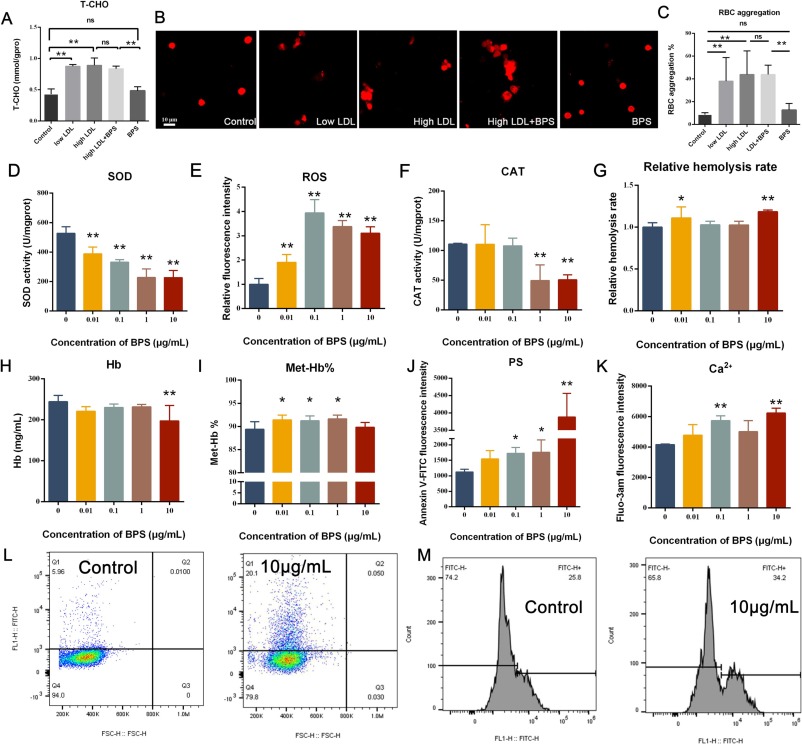Fig. 2 The effect of BPS and LDL exposure on RBCs. The levels of T-CHO (A) in the RBC membrane after RBCs were treated with low-dose LDL (232 μg/mL), high-dose LDL (464 μg/mL), 464 μg/mL LDL combined with 100 μg/L BPS, and 100 μg/L BPS alone for 24 h, n = 3. (B) RBCs were exposed in LDL or BPS for 24 h. The morphology and aggregation of RBC were detected by confocal microscopy and the percentage of aggregation was shown in (C). n = 3. The levels of SOD (D), ROS (E), and CAT (F) in RBCs after BPS exposure for 24 h. n = 3. The relative hemolysis rate compared to the control group (G), the concentration of Hb (H) and the percent of Met-Hb compared with the concentration of Hb (I) were measured. n = 4. BPS induced PS externalization (J) (n = 4) and Ca2+ accumulation (K) (n = 3) after exposure for 24 h. (L) The sample density diagram of Annexin V-FITC fluorescence in control and 10 μg/mL BPS after exposure for 24 h. (M) Representative histogram of Fluo-3 fluorescence of RBCs in the control group and 10 μg/mL BPS group after exposure for 24 h. The data are expressed as the means ± SDs; * 0.01 < p < 0.05 and ** p < 0.01 compared with the control.
Image
Figure Caption
Acknowledgments
This image is the copyrighted work of the attributed author or publisher, and
ZFIN has permission only to display this image to its users.
Additional permissions should be obtained from the applicable author or publisher of the image.
Full text @ Environ. Int.

